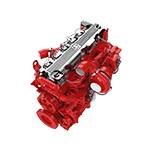ก.ย. . 14, 2024 17:34 Back to list
rear drum brakes replacement
Replacing Rear Drum Brakes A Comprehensive Guide
When it comes to vehicle maintenance, ensuring that your braking system is in good condition is paramount for safety. One of the critical components of this system is the rear drum brakes, commonly found in older cars and many trucks today. If you've noticed signs of wear, such as squeaking noises, decreased braking efficiency, or pulling to one side when braking, it might be time to consider replacing your rear drum brakes. This article will guide you through the process of replacement, helping you to better understand what’s involved.
Understanding Rear Drum Brakes
Rear drum brakes operate by using friction to slow down the vehicle. They consist of a drum, brake shoes, a wheel cylinder, and several springs to ensure the system returns to its original position after braking. Over time, the brake shoes wear down, and the drum may become scored or warped, leading to diminished braking performance. Regular inspection and timely replacement can prevent more extensive damage and ensure your safety on the road.
Signs of Worn Drum Brakes
Before diving into the replacement process, it’s essential to identify the signs of worn drum brakes. Common indicators include
1. Squeaking or Grinding Noises If you hear unusual noises while braking, it can be a clear sign that your brake shoes have worn down.
2. Reduced Brake Performance A noticeable decrease in stopping power can indicate that your drum brakes are failing.
3. Pulling to One Side If your car drifts to one side when you apply the brakes, this could mean that the brake shoes are unevenly worn.
4. Vibration A pulsing or vibrating feeling when braking can signify warped drums.
Tools and Materials Needed
To replace rear drum brakes, you will need some tools and materials
rear drum brakes replacement

- New brake shoes - Brake drums (if worn) - Brake cleaner - Wrenches and sockets - Screwdrivers - Jack and jack stands - A torque wrench - Safety glasses and gloves
Replacement Process
1. Preparation Park your vehicle on a flat surface, set the parking brake, and wear safety gear. Loosen the lug nuts on the rear wheels before lifting the vehicle.
2. Lifting the Vehicle Use a jack to lift the rear of the vehicle and secure it with jack stands. Remove the wheels to access the rear drum brakes.
3. Removing the Drums Inspect the drum for retaining screws, and remove them if applicable. If the drum doesn’t come off easily, it may be necessary to use a drum puller.
4. Replacing Brake Shoes Once the drum is removed, detach the old brake shoes by removing the springs and hold-down clips. Install the new brake shoes in the same configuration, ensuring they are properly positioned.
5. Reinstalling the Drums After the new shoes are in place, reattach the brake drums and tighten them down. Replace any retaining screws if applicable.
6. Reassembly Put the wheels back on, hand-tightening the lug nuts. Lower the vehicle and then use a torque wrench to tighten the lug nuts to the manufacturer’s specifications.
7. Testing Before hitting the road, pump the brake pedal to ensure the new shoes are properly seated. Take the vehicle for a slow test drive to confirm that the new brakes are functioning correctly.
Conclusion
Replacing rear drum brakes may seem daunting, but with the right tools and careful attention to detail, you can successfully tackle this important maintenance task. Regular brake inspections and timely replacements can enhance your vehicle's performance and ensure your safety on the road. If you're ever in doubt, don’t hesitate to consult a professional mechanic.
-
Brake Drum Liza Durable & High-Performance Brake Solutions
NewsMay.29,2025
-
Brake Drum Liza Durable Drum Brake & Shoe Replacement Solutions
NewsMay.29,2025
-
Brake Drum Liza High-Quality Drum Brake & Shoe Solutions
NewsMay.29,2025
-
Brake Drum Liza Durable Drum Brake & Shoe Solutions for Vehicles
NewsMay.29,2025
-
Brake Drum Liza Premium Drum Brake Components & Shoes
NewsMay.29,2025
-
Brake Drum Man Durable Drum Brake Drums & Shoes Supplier
NewsMay.28,2025
